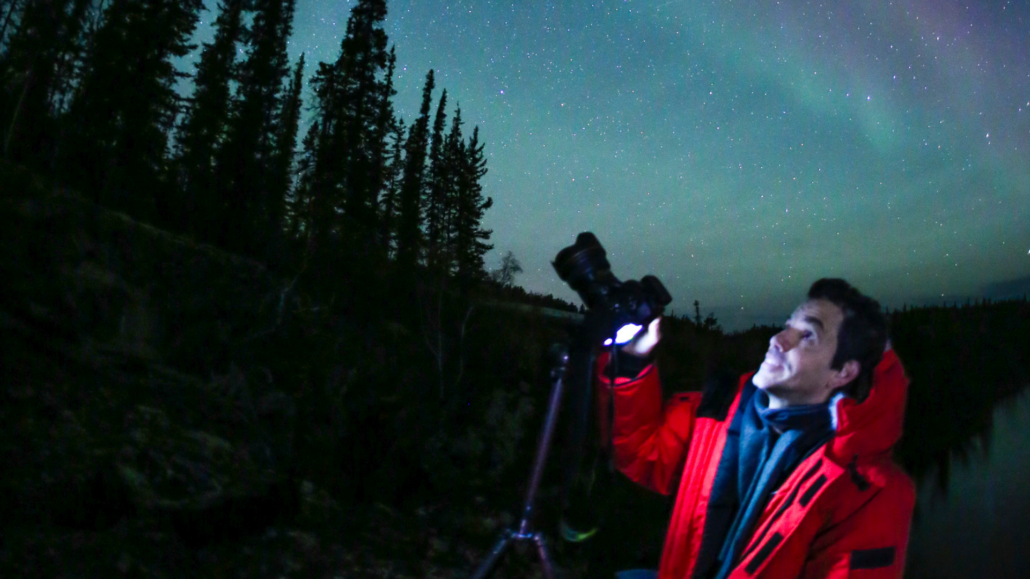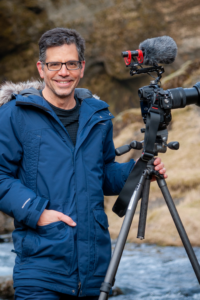BEETHOVEN SYMPHONY NO. 6 (A SCIENCE AND SYMPHONY CONCERT)
For longtime friends of the Victoria Symphony, Dr. José Francisco Salgado needs no introduction. The astronomer, photographer, filmmaker, and educator has a warm and ongoing relationship with the ensemble that dates back to 2009, when he presented his visual version of Gustav Holst’s The Planets, using NASA images and historical illustrations—and in a way this program is a direct result of that first meeting. While in Victoria, Salgado was introduced to the music of Calgary composer John Estacio, who has also become a frequent collaborator. Their latest Science & Symphony project, Moontides, will receive its second performance here, but first we’ll venture into orbit for Johann Strauss Jr.’s On the Beautiful Blue Danube, perhaps the most famous waltz in music history.
Outer space might seem an odd setting for a piece inspired by the earthly paradise of the Danube valley, but there’s a precedent: in 1968, the legendary filmmaker Stanley Kubrick used Strauss’s music to score a memorable sequence in 2001: A Space Odyssey, in which two spacecraft meet high above the Earth’s blue orb. Of course, Kubrick had to craft his spectacular visual effects using cinematic magic, but Salgado has connections.
“In 2011,” he explains, “the Pacific Symphony in California approached me because they were planning this 2001-themed concert, and one of the pieces was going to be the “Blue Danube”, so they asked me if I wanted to make a film for it. And, for me, the concept was very, very simple. I remembered that in the film it’s used when the spacecraft are coupling in orbit, and of course that was all done using Hollywood effects. I said ‘I could do something very similar, but using NASA footage.’ So everything that you see in the film is video and time-lapse photography shot by the astronauts themselves aboard the Space Shuttle and the International Space Station—and of course all following the music.”
This cosmic opening bookends nicely with the concert’s second half, Ludwig van Beethoven’s Symphony No. 6 in F major, popularly known as the “Pastoral” symphony. In essence, we descend from high above the earth to one particular hillside overlooking the same river that inspired Strauss. Beethoven’s own subtitle for the Sixth was “Pastoral Symphony, or Recollections of Country Life”, and while it is neither the first nor the last work of symphonic genius to be tied to a particular landscape, it is an especially warm and loving tribute to the restorative power of nature. Ecotherapy, it seems, is nothing new.
Nor, perhaps, is “ambient” music. As the Guardian’s perceptive music critic Tom Service has pointed out, the work’s first movement is “like looking at a landscape that changes slowly with the lengthening of the shadows and the deepening of the light, in which time is virtually suspended. That’s a remarkable reversal of symphonic polarity: this place in the first movement of a big symphony is supposed to be full of driving drama and incident, not static contemplation.”
From there, Beethoven—who is known to have done some of his best thinking while walking in the countryside—meanders through a restorative rest beside a babbling brook, relaxes further with a stein of bock at a rustic tavern, endures a brief drenching in a wild but harmless storm, and finally arrives at a sweet allegretto that contains what might be the most-whistled melody in the entire classical repertoire. The idea that it was inspired by an overheard shepherd’s pipe is not at all far-fetched.
“It’s in this [last] movement where Beethoven achieves something more purely spine-tingling and life-enhancingly joyful than almost anywhere else in his output,” the critic, Service, observes. “This music is also a consummation of the symphony’s spirals of time and pattern….It’s as if all of these small-scale cycles of repetition are enclosed by an even bigger orbit of time.
“Pastoral?” he concludes. “This music is ‘cosmic’, too!”
It is hard to imagine a more fitting companion than Beethoven’s 6th to present alongside the other works that Salgado has chosen to illustrate. Estacio’s Moontides, for example, is also concerned with nature’s cycles, though his are more daily than seasonal. Taking as his inspiration the high tides of the North Atlantic, which reach their zenith in eastern Canada’s Bay of Fundy but are also impressive on the shores of Normandy, the composer has captured both their unbridled power and their comforting predictability, while adding another Beethoven-esque touch: echoes of birdsong rendered in orchestral sound. Salgado, whose usual practice is to fit his imagery to the musical score, has responded with evocative shots of the European holy sites of St Michael’s Mount, Cornwall and Normandy’s Mont-Saint-Michel next to panoramas from the wilder shores of the Minas Basin in Nova Scotia. Time-lapse photography takes us from dawn to dusk, as the tide surges forward over mudflats and estuaries; drone footage further enhances our appreciation of the geography created by water’s power—and, ultimately, by the moon, whose gravitational pull creates these earth-sculpting tides.
Salgado’s visual poetry is even wilder, and definitely stranger, in the imagery he has added to Michael Abels’ Liquify, a collaboration that came about almost by accident. As Salgado tells it, he had acquired a new camera and a new drone prior to shooting the European footage for Moontides. Not wanting to show up with untested gear, he opted to take a detour to Iceland, where he was able to put his equipment to work under especially unpredictable conditions. The experience, and the footage, exceeded his expectations, he says.
“Iceland is the place that I’ve been that is the most like being on another planet,” he explains. “It didn’t look like anything that I’ve seen on Earth, and it was absolutely beautiful.”
Of course, it’s possible to soak up all of this visual splendour—as well as musical in Dame Ethel Smyth’s depiction of the Cornish coast—on a purely sensual level. But Salgado, who believes that “everything goes better with music”, hopes that listeners will leave the hall inspired to investigate the science behind the scenery.
“The main motivation is to present science, right?” he says. “To present scientific concepts and scientific vistas in a very non-intimidating way, and also in a venue that is non-traditional when it comes to scientific education. Let’s sneak science into the concert hall and then present it with music, because when you combine all these disciplines the end result is just greater than the mere sum of them.
“It’s all about inspiring people to learn more about the subjects presented—and to care.”
Notes by Alex Varty




